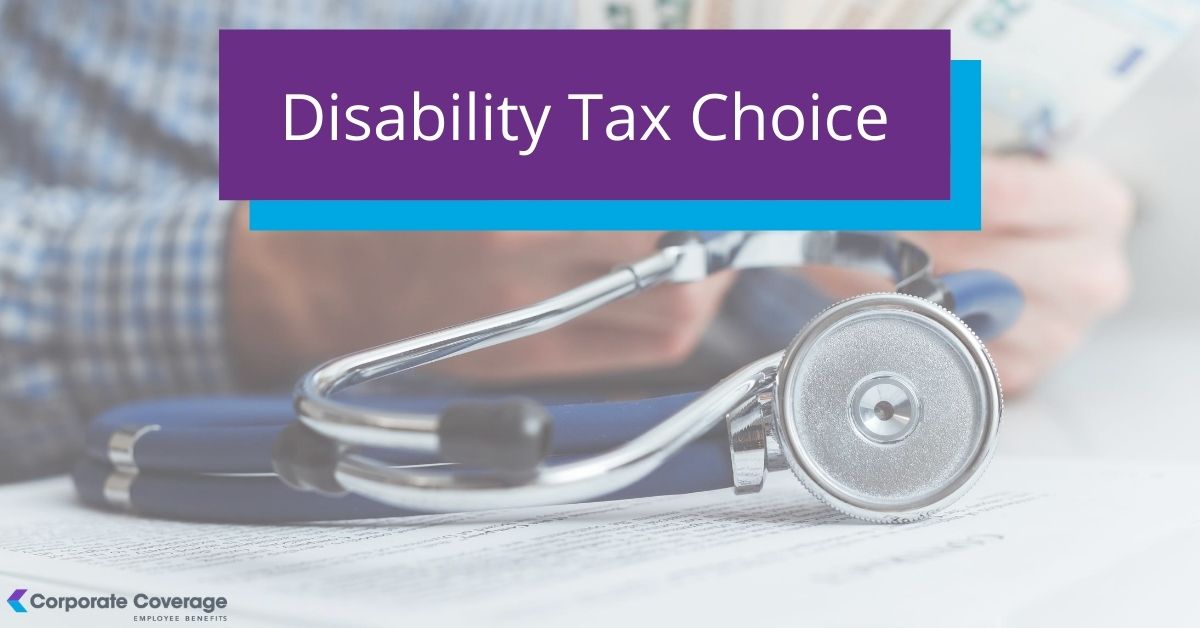Disability Tax Choice: A Better Way to Offer Company-Paid Disability Insurance To Your Employees

The loss of work income due to disability often causes financial hardship to employees in addition to the stress of the medical issues they experience. Short- and/or long-term disability benefits that are paid for by you, the employer, is known as a non-contributory plan, which is a much-appreciated benefit. When you provide these benefits, in the event of a claim, the employee would be responsible for paying income tax on the weekly or monthly benefits that they receive from the insurance company.
The most common disability benefit design for short-term disability provides 60% of the employee’s weekly salary and 60% of the monthly salary for long term disability. That means benefits received upon claim are already reduced by 40%. From this initial point, the employee pays taxes on this already reduced amount, resulting in the employee’s disability check potentially being 30%-40% of their pre-disability earnings, depending upon their tax bracket.
Of course, not every employer provides and pays for disability insurance, so even offering it at all is a great benefit. Beyond that, however, there is still another option. The IRS, via Revenue Ruling 2004-55, advises that if the employee is willing to pay tax on the premium that you pay on their behalf for the disability insurance, the employee will avoid taxes on the benefits in the event of a claim. To reiterate, the employee isn’t paying the premium, they are paying just the tax on the premium. The taxes paid on the premium pale compared to the potential taxes paid at claim time, especially in a long-term disability claim. The potential tax savings to all employees is tremendous! What’s great about administering your disability benefits under this “tax choice” option is the ability for each employee to decide which option to choose. The decision is in their hands. The employee makes this tax choice election each year and the election must be irrevocable for the year. Once explained and understood, most employees choose to pay the tax on the premium.
For those employees who have decided to pay the tax on the premium, you will need to advise your payroll company to capture the tax. You can decide when to adjust their payroll to pay this tax: Perhaps once a year, per pay, or quarterly. We have chosen to charge our employees per pay. This way, the amount of the tax payment has a minimal effect on their net pay as it is spread out over the course of the year.
In order to offer this tax choice to your employees, the plan you purchase from the insurance company must include the tax choice provision, which we request during the quoting process. Most insurance companies do offer this as an option although we have found some limitations for groups under 10 lives. While there could be a cost difference between a non-contributory plan and the tax choice plan, we have found the cost to be minimal with the potential benefit to you and your employees being substantial.
If you are offering disability insurance on a voluntary basis, meaning your employees pay 100% of the cost, then be sure to take their premiums out of their pay post-tax so they do not pay any tax at claim time.
Reach out if you want to explore establishing a tax choice disability plan for your company. Corporate Coverage is here for you!